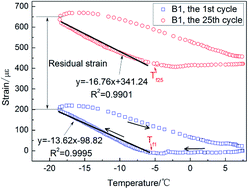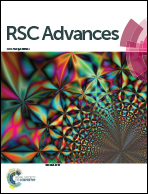Deformation of a concrete matrix subject to a cyclic freeze–thaw process
Abstract
The cyclic freeze–thaw process has been recognized as one of the most primary factors leading to structural and function failure of concrete. Strain, which may have certain inherent advantages when compared to traditional test parameters such as real-time non-destructive monitoring, which is more accurate and continuous with little error caused by manual intervention, was used to characterize the deformation and deterioration of a concrete matrix under a cyclic freeze–thaw process in this study. With the cyclic freeze–thaw process, the strain hysteretic loop is raised upwards indicating that residual strain is generated in the concrete matrix. The residual strain generated proves that damage in the concrete matrix is continuously accumulated and an irreversible deterioration process. The variation of freeze characteristic temperature ΔTf and the apparent frost heaving coefficient Δαf defined in this study can be used to characterize the degree of freeze–thaw damage and the frost resistance of concrete, respectively. Through theoretical analysis, a numerical model, which can show the relationship between concrete freeze–thaw damage and residual strain has been deducted and verified, which indicates that residual strain can be used to characterize the frost resistance of concrete subjected to a cyclic freeze–thaw process such as traditional parameters. Moreover, the residual strain generated in 3.5 wt% NaCl solution is larger than in water, showing that chloride attack accelerates the freeze–thaw damage of concrete.


 Please wait while we load your content...
Please wait while we load your content...